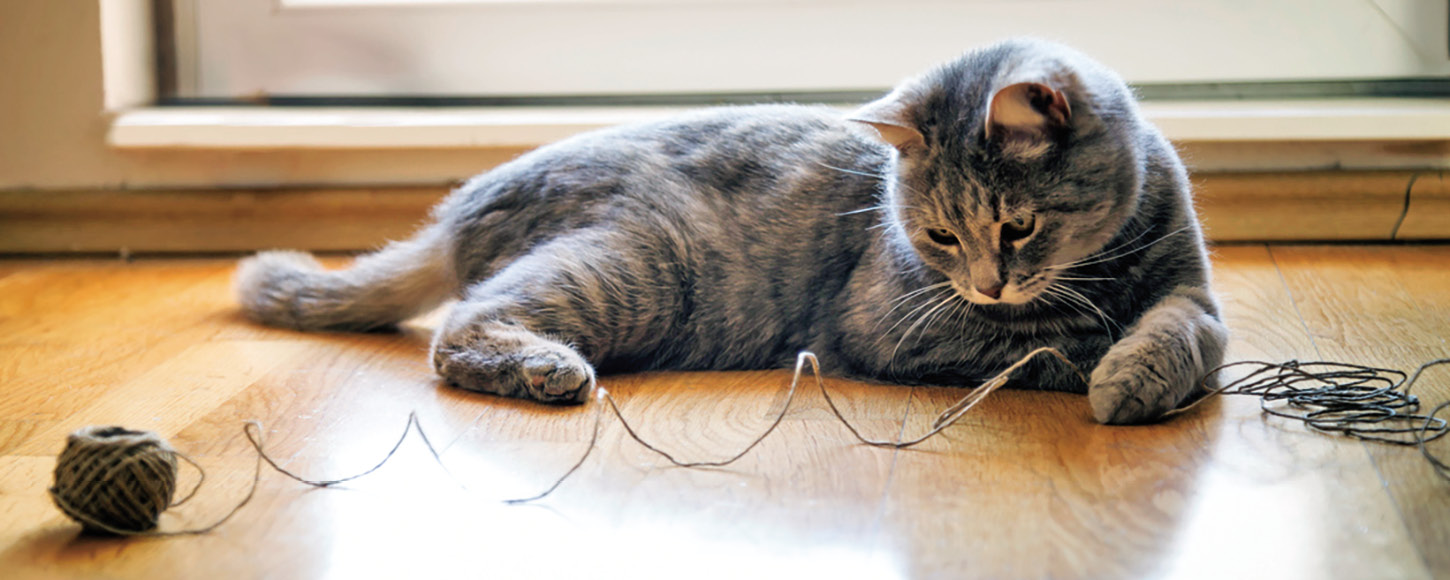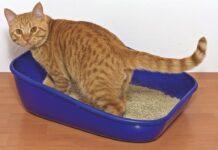Q: My 8-year-old Maine Coon cat ate part of a rope attached to a cat toy wand. The rope is made of three twisted parts that he loved to bite. I had no idea about the risk. Today I discovered a long piece of the rope in his bowel movement (about 5 or 6 inches long). I’m very concerned. His behavior seems normal, however, a few days ago he threw up a large amount of liquid but not since. Do I need to take him to a veterinarian to follow up his eating a piece of rope? Thank you for your advice.
A: Thank you for getting in touch, and I am very sorry to hear about your cat’s problem. Ingesting long, thin objects such as string, rope, or tinsel (called a linear foreign body) can be a very serious matter in cats, often requiring abdominal surgery to prevent potentially life-threatening perforation of the intestines.
My brief answer is that if you saw him ingest this rope, you should bring him to be examined by a veterinarian as soon as possible.
While these linear foreign bodies may occasionally pass through the gastrointestinal (GI) tract and come out in the feces, they can cause potentially dangerous obstruction of the GI tract. In some cases, one end of the foreign body can become lodged somewhere in the GI tract (often getting caught on the base of the tongue) and the other end can be carried deeper into the intestines.
As the intestines continue to move trying to pass the foreign body through, they can become bunched up due to the end that is immobile, and this can result in a compromise of blood supply to large parts of the intestine or to perforation of the intestines. This phenomenon can take variable periods of time to occur.
Either of these scenarios can result in intestinal contents spilling into the abdominal cavity, with subsequent bacterial infection (peritonitis) and loss of viability (i.e., death) of portions of the GI tract. This infection can also spread to the bloodstream (sepsis), which is a potentially fatal complication.
Your veterinarian will examine your cat and likely recommend abdominal radiographs (X-rays) and/or abdominal ultrasound to evaluate the structure and function of the GI tract. He or she may recommend sedating or anesthetizing your cat to look at the back of the tongue to see if this rope might be bound up there.
Bloodwork may also be recommended to evaluate overall health and/or to prepare for surgical exploration of the abdominal cavity and removal of any foreign bodies if they are found. Such surgery is necessary and potentially life-saving if a linear foreign body is present.
Importantly, if you notice any of this rope protruding from either his anus or his mouth, do not pull on it, as doing this can lead to worsening of the intestinal bunching phenomenon mentioned above and worsen outcomes.
I hope that this is helpful, and please send us an update when you can.




